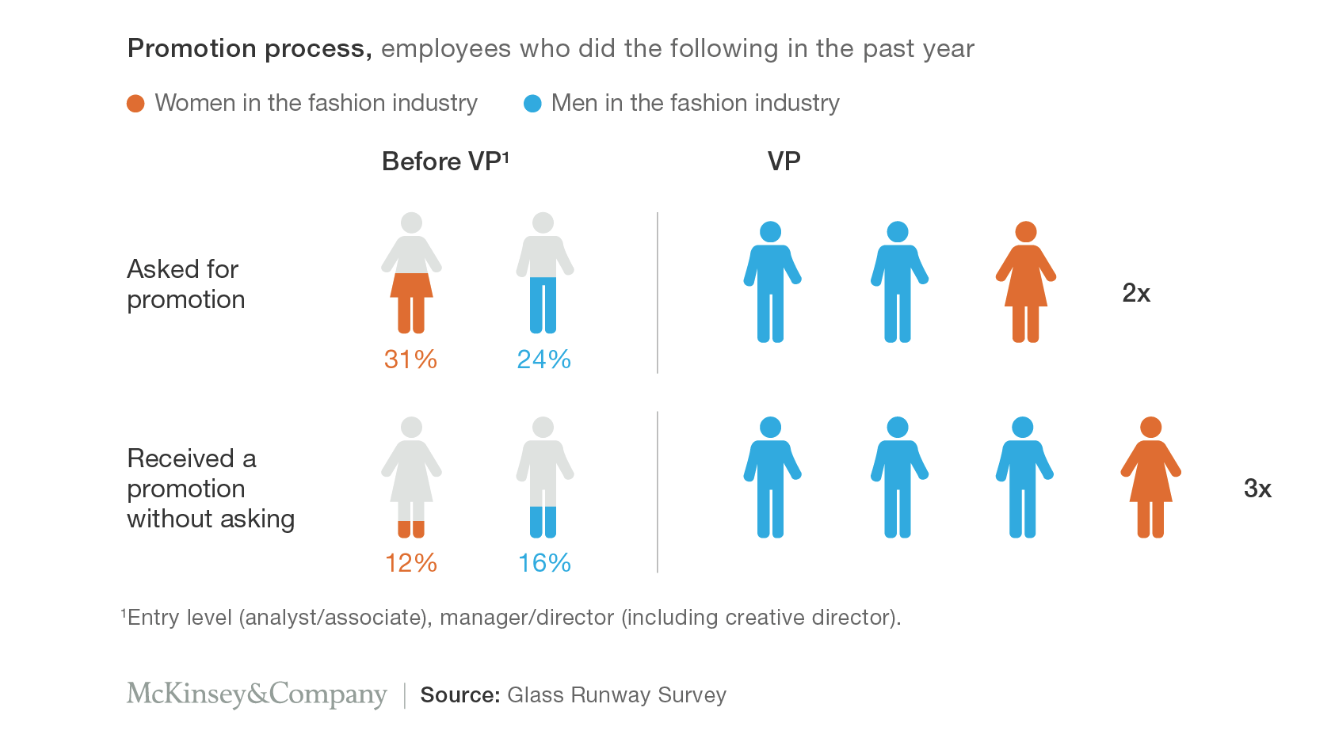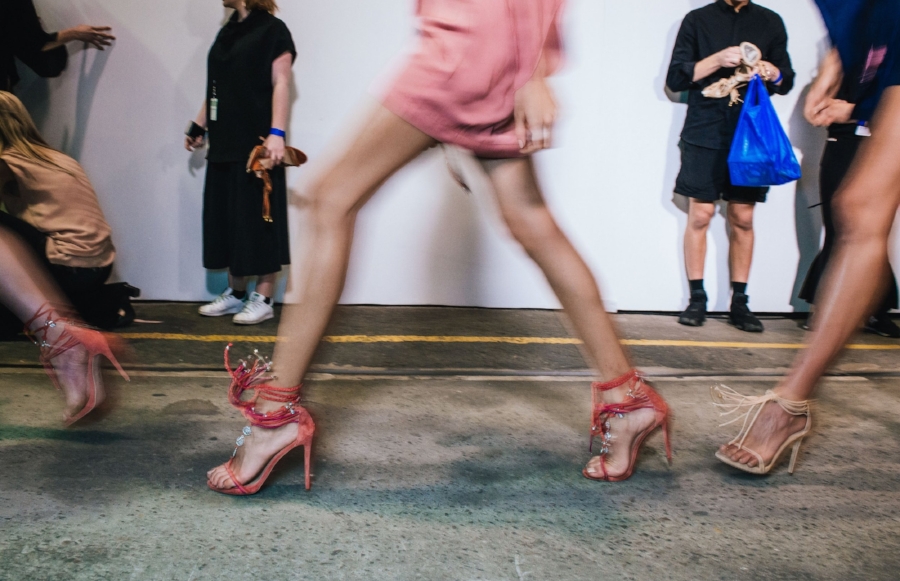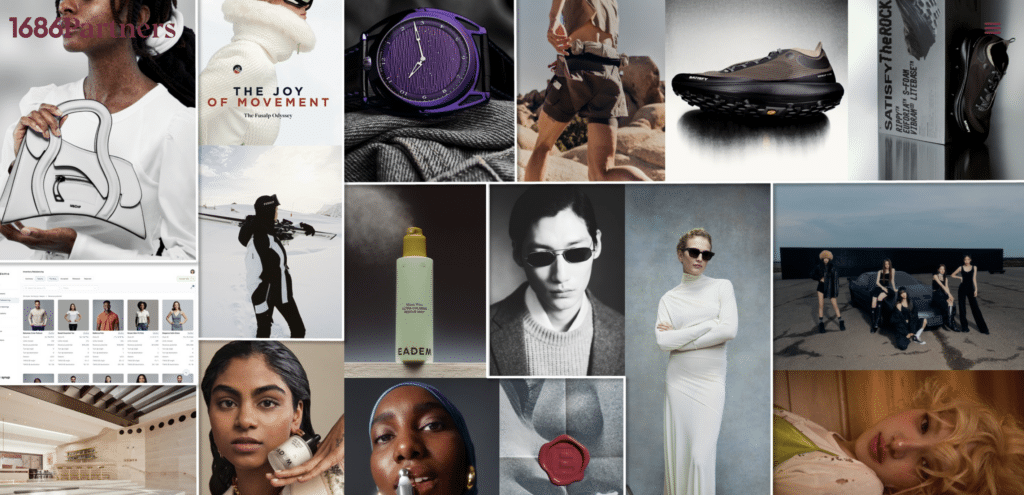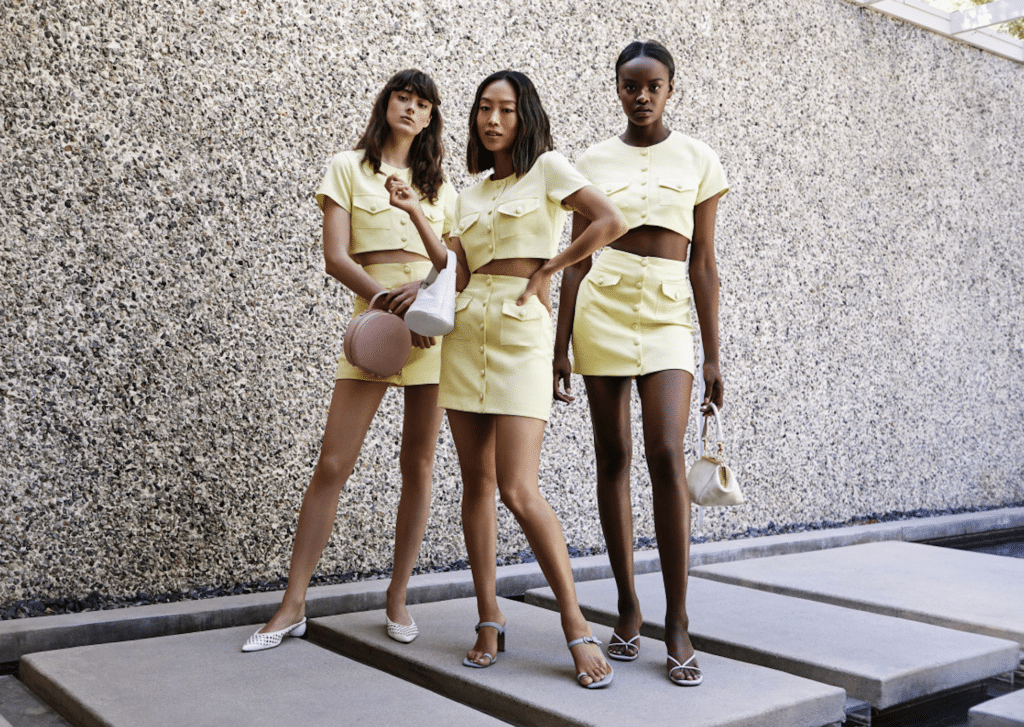“The fashion industry is propped up by women—they spend three times more on clothing than men,” McKinsey declared this week. Yet, fashion, with its overwhelmingly female consumer base, has a serious gender inequality problem behind the scenes. To be exact, Mckinsey, the New York-based consulting giant, states, “Fewer than 50 percent of well-known womenswear brands are designed by women, and only 14 percent of major brands have a female executive in charge.” The industry is aware of the systemic employment inequality in terms of gender and yet, progress remains low.
In an attempt to identify the core drivers of fashion’s large-scale gender disparity (and offer appropriate solutions for the future), McKinsey partnered with Glamour magazine and fashion trade organization Council of Fashion Designers of America (“CFDA”) to survey 535 and interview 25 U.S.-based professionals across the industry, both women and men at various tenure levels. Their key findings are below (and the full report can be found here) …
According to McKinsey, Glamour and the CFDA’s report, entitled, “Shattering the Glass Runway,” there are four primary sources of fashion’s gender inequality:
1) Lacking awareness and commitment: The sheer number of women working in fashion masks the problem for many. More than 50 percent of male survey participants see no gender inequality in the industry. At the same time, more than 80 percent of survey participants were unable to cite a concrete initiative their company had implemented to address gender inequality;
2) Ambiguous success criteria: Most male executives (80 percent of senior vice presidents and vice presidents) report that the criteria for advancement is clear, whereas only 65 percent of their female counterparts agree;
3) Disparity in sponsorship and mentorship: One reason women may be less clear on the path to success is because they receive less career advice than men do. Across all tenures, only 22 percent of women report getting advice to advance their careers, versus 33 percent of men. According to McKinsey, “Women may be less confident about what it takes to succedd because they are receiving less advice [than men] on how to advance their careers;” and
4) Constraints of work-life balance: In interviews, women consistently pointed to a lack of formal programs (for example, flexible work options) and to (unconscious) biases—about career motivation and the ambition of mothers—as sources of balance issues. Only 45 percent of women reported that their companies had paid maternity leave, and just 24 percent said they offered work-flexibility programs.

The report sets forth “some actions that could help” in addressing these four specific sources of inequality:
1) Driving awareness: Companies in the fashion industry need to articulate the link between gender diversity and increased performance. They should also commit to track and share gender-related key performance indicators with their employees, holding one another accountable to progress;
2) Clarifying success criteria: Companies should increase transparency when it comes to evaluations, promotions, and compensation. To do so, they first need to define objective criteria and develop end-to-end processes that reduce bias;
3) Increasing sponsorship and mentorship opportunities: Companies should offer mentorship programs for women, providing them with an opportunity to forge meaningful professional connections and preparing them to assume top management positions; and
4) Allowing women to fit work into their lives: Companies should create policies and programs that help employees fit work into their lives. Women—and men—need family-friendly policies that provide adequate parental leave and smooth the transition back into the workplace. Increasingly, companies in and beyond the fashion industry are recognizing the importance of flexible work programs and child-care support (dedicated on-site care or emergency back-up support).














